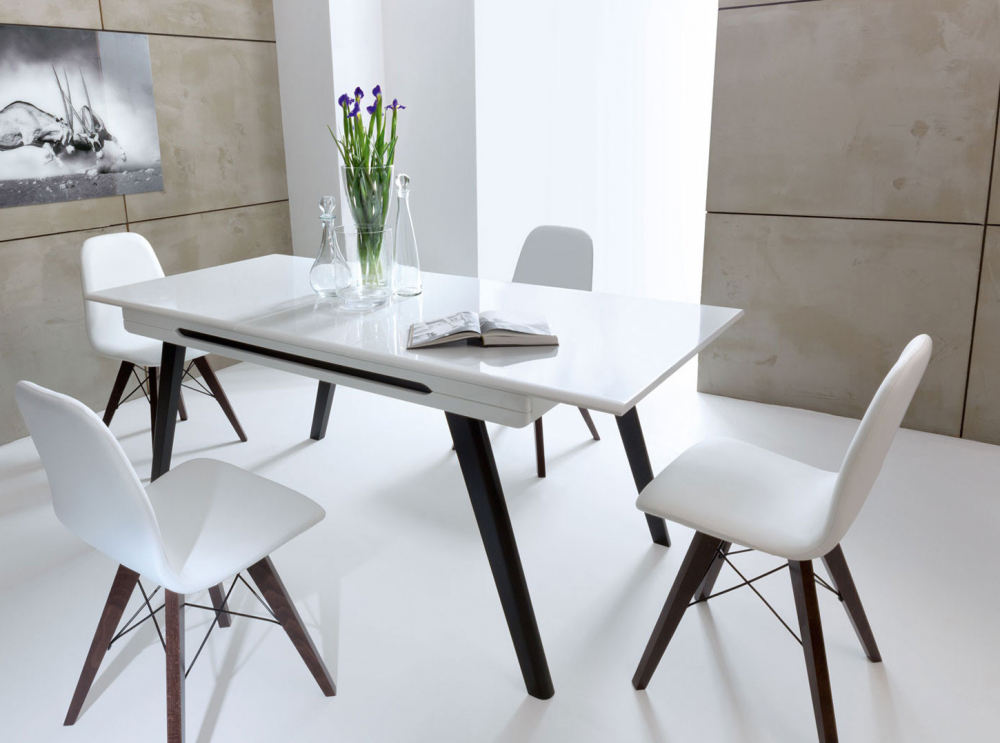INSPIRATIONS

How to choose a dining table?
A dining table will often last for years. Such a purchase is an investment, and worth thinking through. What material should you choose? What style and size? What and where works best? We will answer these questions today.
Big or small?
The answer to this question is not at all obvious. Your choice will primarily depend on the size of the room or space you have.
Optimally you need:
-- 70-80 cm of space between the table top and the wall or furniture
-- 60 cm along the table top for one person,
-- 20 cm of free space between sitting people.
Is bigger certainly better, even when you have a lot of space? Not really. A table for 12 people with just two diners is a rather sad sight, and not a very psychologically comfortable arrangement.
Unless the dining room is just for special occasions, and you normally eat for example at the kitchen counter or in front of the TV, an extendable table is the optimal solution. Remember, however, that the folded version of the table should comfortably accommodate all household members. You will definitely not use it if it requires daily unfolding and folding.
Angular or oval?
The classic dining table is a round table. All places around such a piece of furniture have the same importance, nobody is more comfortable, nobody is sitting at the corner. It is also safer for small children and for those of us who tend to bump into furniture.
Round tables often extend into an oval shape that has similar advantages and takes up less space for the same number of diners.
The biggest disadvantage of a round table is the space it requires. It will also not work well against the wall.
Instead, use a rectangular or square table, as this shape fits into rooms of all sizes. In the extendable version it often gives several size options (fully folded, with one wing folded, with inserts in the central part). Choose such a table when you have less space or when the table is to multi-task, for example, also serve children doing their homework.
Wood, glass or maybe laminate?
Have you decided on the shape and size of the table? Time for choosing the material. The optimal choice will be the result of the purpose of the table (only for eating, also for other tasks), its users and use frequency (children, teenagers, the elderly, daily / from holidays, under a tablecloth / without tablecloth) and the style of the room in which it is to be located.
Wood
Durable and stylish, solid wood exudes class and quality, especially when we use classic hardwoods such as oak, elm or ash. Birch is typical for modern Scandinavian styles. Softwoods, especially the knotty, often darkened pine wood, evoke a less elegant style and are less durable, but they can be great for more rustic interiors.
Chipboard or MDF
Tabletops made of these materials are often lighter and cheaper than solid wood tabletops. They are also easy to keep clean. However, they are less durable, less resistant to moisture and spilled liquids, and less stylish.
Glass
Modern, fashionable, easy to clean. However, it is also easy to get dirty, it scratches easily and is very hard and relatively heavy, hence not recommended in family interiors. Although glass tabletops are made of safety glass, they are not indestructible, and can crack under the influence of heat or be broken. Stylistically, glass tops match cool, modern arrangements. A transparent glass top will brighten and optically enlarge the room.
